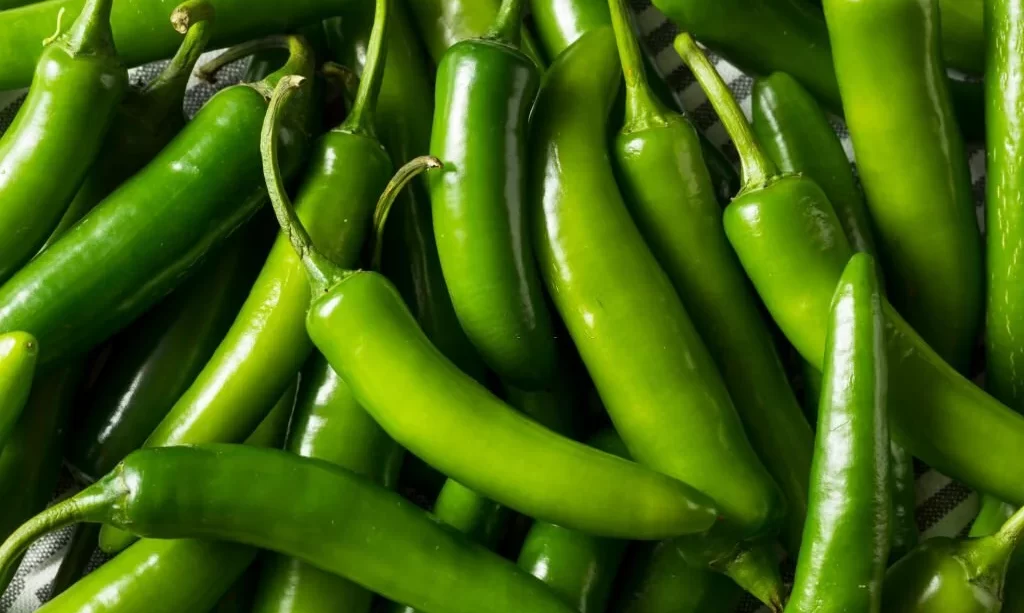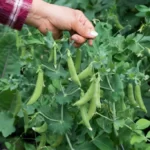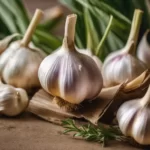Serrano peppers, with their vibrant green or red hues, are a fiery addition to the world of culinary delights. Loved for their exceptional spiciness and robust flavor, these peppers are a staple in many cuisines, from Mexican and Thai to Southwestern and beyond. Growing your own serrano peppers not only allows you to add a dash of heat to your dishes but also provides the satisfaction of cultivating your culinary treasures. In this comprehensive guide, we will explore the art of growing serrano peppers, from understanding their unique characteristics to nurturing them into fruitful plants. Whether you’re a seasoned gardener or a novice with a penchant for spicy flavors, this article will equip you with the knowledge and skills to cultivate these spicy gems in your garden.
- Two (2) large live plants – big, healthy, ready to grow, premium pepper plants, 4” to 8” tall plants, in 4” pots. NON GMO No Neonicotinoids
- Smaller and hotter than jalapenos. They can be as hot at 20,000 SHU; Perfect for salsa, roasting and relishes. Fruit will go from green to red as they ripen and get hotter and sweeter the longer they stay on the vine
- Handle with care! Every part of this plant is HOT, wear gloves when handling and avoid touching the eyes or nose. Season long harvest. Fruit will grow from green to red as they ripen and only get hotter and sweeter the longer they say on the vine
- Grown in the Midwest. Plant in any US Zone. Plant in containers, small spaces, balconies, patios or large gardens. Benefit from caging or staking. Treat as a tender annual in Zones 9 and colder. 10x Root Development – robust plants with healthy roots handle transplanting better and grow stronger right from the start
- Careful Packaging. Your fresh plants arrive quickly in our exclusive, eco-friendly, 100% recyclable box. 100% Satisfaction Guarantee. Includes our Clovers Garden copyrighted Quick Start Planting Guide
Serrano Peppers
Before delving into the intricacies of growing serrano peppers, it’s essential to acquaint yourself with their characteristics. Serrano peppers (Capsicum annuum) are small, elongated chili peppers, typically measuring between 1 to 4 inches in length. These peppers are known for their moderate to high heat levels, which can range from 10,000 to 23,000 Scoville Heat Units (SHU). This spiciness adds a thrilling kick to a variety of dishes, making serranos a popular choice in salsas, sauces, and pickled pepper recipes.
Serrano peppers are typically green when unripe and turn red as they mature. The flavor of serranos is bright and grassy, with a slightly fruity undertone. It’s this distinct combination of heat and flavor that makes serrano peppers a coveted ingredient in many traditional and fusion recipes. Understanding the characteristics of serrano peppers is the first step towards successfully growing and incorporating them into your culinary creations.
Choosing Serrano Pepper Varieties
Serrano peppers come in various varieties, each with its own unique characteristics and levels of spiciness. When selecting the right serrano pepper variety for your garden, consider the following factors:
- Heat Level: Different serrano pepper varieties may have varying levels of spiciness. Some gardeners prefer milder serranos, while others seek the intense heat of the hottest variants. Read seed packets or consult with local nurseries to understand the Scoville Heat Units (SHU) of the chosen variety.
- Growth Habit: Serrano pepper plants can vary in size and growth habits. Some are compact and suitable for container gardening, while others can grow into larger bushes. Choose a variety that matches your available space and gardening preferences.
- Maturation Time: Serrano pepper varieties may differ in how long they take to reach maturity. If you have a shorter growing season, selecting a faster-maturing variety can be advantageous.
- Color Preference: While serranos are typically green when unripe and red when mature, some varieties may have unique color variations. Consider whether you have a preference for the traditional green or are interested in experimenting with different colors.
By carefully considering these factors, you can select the serrano pepper variety that best suits your taste preferences and gardening environment. Whether you opt for a milder, compact variety or a spicier, larger cultivar, the journey to growing serrano peppers is a rewarding adventure filled with flavor and spice.
Starting from Seeds
Growing serrano peppers from seeds is a cost-effective and rewarding way to start your pepper garden. Here’s how to kickstart your serrano pepper growing journey:
- Seed Selection: Begin by choosing high-quality serrano pepper seeds from a reputable source. You can find a variety of serrano pepper seed options, each with its unique characteristics. Select seeds that align with your desired heat level, flavor, and growth habit.
- Germination: Start the germination process by planting your serrano pepper seeds in small containers or seed trays filled with well-draining seed-starting mix. Plant the seeds about 1/4 inch deep and keep the soil consistently moist.
- Warmth and Light: Serrano pepper seeds require warmth and sunlight to germinate successfully. Place the containers in a warm location or use a seedling heat mat to maintain a temperature of around 70-80°F (21-27°C). Once the seedlings emerge, provide them with ample light, either from a sunny windowsill or using grow lights.
- Transplanting: When your serrano pepper seedlings have grown to a size of about 3-4 inches with at least two sets of true leaves, they are ready for transplanting. Harden them off by gradually exposing them to outdoor conditions before moving them to your garden or larger containers.
Starting serrano peppers from seeds allows you to experience the entire growth cycle of these fiery peppers, from germination to harvest. It’s a satisfying process that gives you greater control over the development of your pepper plants.
Container vs. Garden Bed
The choice between growing serrano peppers in a garden bed or containers depends on your available space and gardening preferences. Each method has its advantages:
Container Gardening:
- Ideal for limited space, including patios, balconies, or small gardens.
- Allows for more precise control over soil quality and drainage.
- Makes it easier to move your pepper plants to follow the sun or protect them from inclement weather.
- Suitable for gardeners who want to experiment with different potting mixes.
Garden Bed Planting:
- Ideal for larger garden spaces and those with well-draining soil.
- Provides an opportunity for peppers to spread their roots and grow to their full potential.
- Often requires less frequent watering due to the increased soil volume.
- Can support more plants, making it suitable for larger pepper gardens.
The choice between containers and garden beds ultimately depends on your specific circumstances. Regardless of the method you choose, both can yield a bountiful harvest of serrano peppers with proper care and attention.
Planting and Caring for Serrano Pepper Plants
Whether you’re planting in a garden bed or containers, the care for your serrano pepper plants remains largely the same. Here’s how to ensure the well-being of your pepper plants:
- Soil Preparation: Prepare well-draining soil rich in organic matter. Serrano peppers thrive in slightly acidic soil with a pH level between 6.0 and 6.8. Ensure proper soil drainage to prevent waterlogged roots.
- Planting: Dig holes or create planting pockets in your garden bed or containers. Space your serrano pepper plants approximately 18-24 inches apart to allow for optimal air circulation and growth.
- Watering: Serrano pepper plants prefer consistently moist soil. Water them deeply, but avoid overwatering, as this can lead to root rot. Mulching can help retain moisture and regulate soil temperature.
- Fertilizing: Feed your serrano pepper plants with a balanced, slow-release fertilizer or a specialized pepper fertilizer. Apply fertilizer at the start of the growing season and again when the peppers start to set fruit.
- Sunlight: Serrano peppers need plenty of sunlight. Provide them with at least 6-8 hours of direct sunlight per day to encourage healthy growth and fruit production.
- Support and Pruning: As serrano pepper plants can grow tall and produce heavy fruit, use stakes or cages to support them. Pruning can help improve airflow and fruit development.
By following these care guidelines, your serrano pepper plants will thrive, producing a fiery bounty of peppers that you can use to spice up your culinary creations. The journey from seeds to vibrant pepper plants is a rewarding one, and with the right care, you’ll soon be enjoying your homegrown serrano peppers in a variety of delectable dishes.
Pest and Disease Management
To ensure healthy and productive serrano pepper plants, it’s essential to be vigilant about pest and disease management. Common issues that may affect your pepper plants include aphids, spider mites, and fungal diseases. Here’s how to manage these challenges:
- Pest Control: Keep an eye out for signs of aphids, spider mites, and other common pests. These can be managed using organic solutions like neem oil or insecticidal soap. Apply these treatments as needed, following the product’s instructions, and consider introducing beneficial insects like ladybugs to help control pest populations.
- Fungal Diseases: Peppers are susceptible to fungal diseases, such as powdery mildew and leaf spot. Prevent these issues by providing good air circulation, avoiding overhead watering, and mulching to prevent soil splash. If fungal diseases appear, treat them with appropriate fungicides following recommended guidelines.
- Viral Diseases: Some viral diseases can affect pepper plants. Unfortunately, there are no effective cures for viral infections. Focus on preventive measures like using disease-free seeds or transplants and controlling insect vectors.
Regularly inspecting your pepper plants and taking proactive steps to address any issues will help ensure a successful and bountiful harvest.
Pruning and Maintenance
Pruning is an essential aspect of maintaining healthy and productive serrano pepper plants. Follow these steps for successful pruning and general plant maintenance:
- Pruning: Prune your serrano pepper plants to encourage bushier growth and better airflow. Start by removing any yellow or diseased leaves and lower branches that touch the ground. Use clean, sharp pruning shears to make clean cuts.
- Thinning Fruit: To support the development of larger, healthier peppers, consider thinning out excess fruit. This means removing some of the smaller, less developed peppers to allow the plant to focus its energy on the remaining fruits.
- Staking: As serrano pepper plants grow and become laden with fruit, they may require support. Stake or cage your pepper plants to prevent branches from bending or breaking due to the weight of the peppers.
- Water and Nutrient Management: Continue to provide consistent moisture, ensuring the soil remains evenly moist but not waterlogged. Maintain a regular fertilization schedule based on your plant’s needs and any soil deficiencies.
By practicing regular maintenance, your serrano pepper plants will remain healthy, vigorous, and more likely to yield a profusion of spicy peppers.
Harvesting Serrano Peppers
Harvesting serrano peppers at the right time ensures you enjoy the best flavor and spiciness. Here’s how to determine when your peppers are ready to pick:
- Color and Size: Serrano peppers are typically green when unripe and turn red as they mature. The color you desire depends on personal preference and recipe requirements. However, the longer the pepper stays on the plant, the hotter it becomes. Most gardeners harvest serranos when they’re green or just starting to turn red. The peppers should be 2 to 4 inches in length, depending on the variety.
- Maturity: Gently twist or cut the peppers from the plant when they reach the desired size and color. Be careful not to damage the plant in the process.
- Regular Harvest: To encourage continued fruit production, pick peppers regularly. Leaving overripe peppers on the plant can signal to it that it’s time to stop producing.
Once harvested, store your serrano peppers in a cool, dry place or use them immediately to add a burst of flavor and heat to your favorite dishes. Your patience and care will be rewarded with a bountiful and delicious pepper harvest.
Storing and Using Serrano Peppers
Storing and using your freshly harvested serrano peppers is where the real culinary adventure begins. Here’s how to make the most of your spicy harvest:
- Storage: Serrano peppers can be stored in the refrigerator for up to 1-2 weeks. Place them in a perforated plastic bag to maintain humidity while allowing air circulation. Alternatively, you can freeze them for longer-term storage. To freeze, chop or leave them whole and store in an airtight container or freezer bag.
- Culinary Delights: Serrano peppers add a delightful kick to a wide range of dishes. Use them fresh or dried to spice up salsas, sauces, marinades, and curries. Serrano peppers also make excellent pickles, providing a burst of flavor and heat to your homemade condiments.
- Drying: To preserve serrano peppers for extended periods, consider drying them. You can air-dry them or use a dehydrator. Once dried, grind them into a fiery pepper powder that can be stored and used in various recipes.
Remember that serrano peppers are hot, so use them sparingly in your recipes, and always taste a small piece to gauge their spiciness before adding them to your dishes. The intense heat they bring to your culinary creations will be a delightful addition to your kitchen.
Troubleshooting Common Issues
During your serrano pepper-growing journey, you may encounter common issues that require your attention. Here are some common problems and their solutions:
- Yellowing Leaves: If your pepper plant’s leaves are turning yellow, it may indicate a nutrient deficiency or overwatering. Ensure proper fertilization and adjust your watering habits accordingly.
- Pests: Aphids, spider mites, and other pests can sometimes infest pepper plants. Use organic pest control methods like neem oil or insecticidal soap to keep them in check.
- Fruit Drop: Premature fruit drop can occur due to fluctuations in temperature or inconsistent watering. Maintain stable growing conditions to prevent this issue.
- Blossom End Rot: This condition, characterized by dark, sunken spots on the pepper’s bottom, is caused by calcium deficiency. Amend the soil with calcium-rich products or apply a calcium spray to the leaves.
Conclusion
Growing serrano peppers is a rewarding endeavor that not only adds a touch of spice to your garden but also brings culinary excitement to your kitchen. From selecting the perfect pepper variety to caring for your plants through challenges and triumphs, your journey from seed to harvest is a testament to your dedication as a gardener.
Whether you enjoy them fresh, dried, or pickled, serrano peppers provide an excellent opportunity to explore the world of spicy flavors and culinary creativity. As you savor your homegrown serrano peppers in your favorite dishes, take pride in the skills and expertise you’ve developed as a pepper gardener.
The process of nurturing these fiery gems has brought you closer to the rhythms of nature, and the rewards of your labor will undoubtedly spice up your meals and leave you with a sense of accomplishment. So, continue to tend to your pepper plants with care and watch as they flourish, bringing a delightful heat to your garden and your culinary creations.





